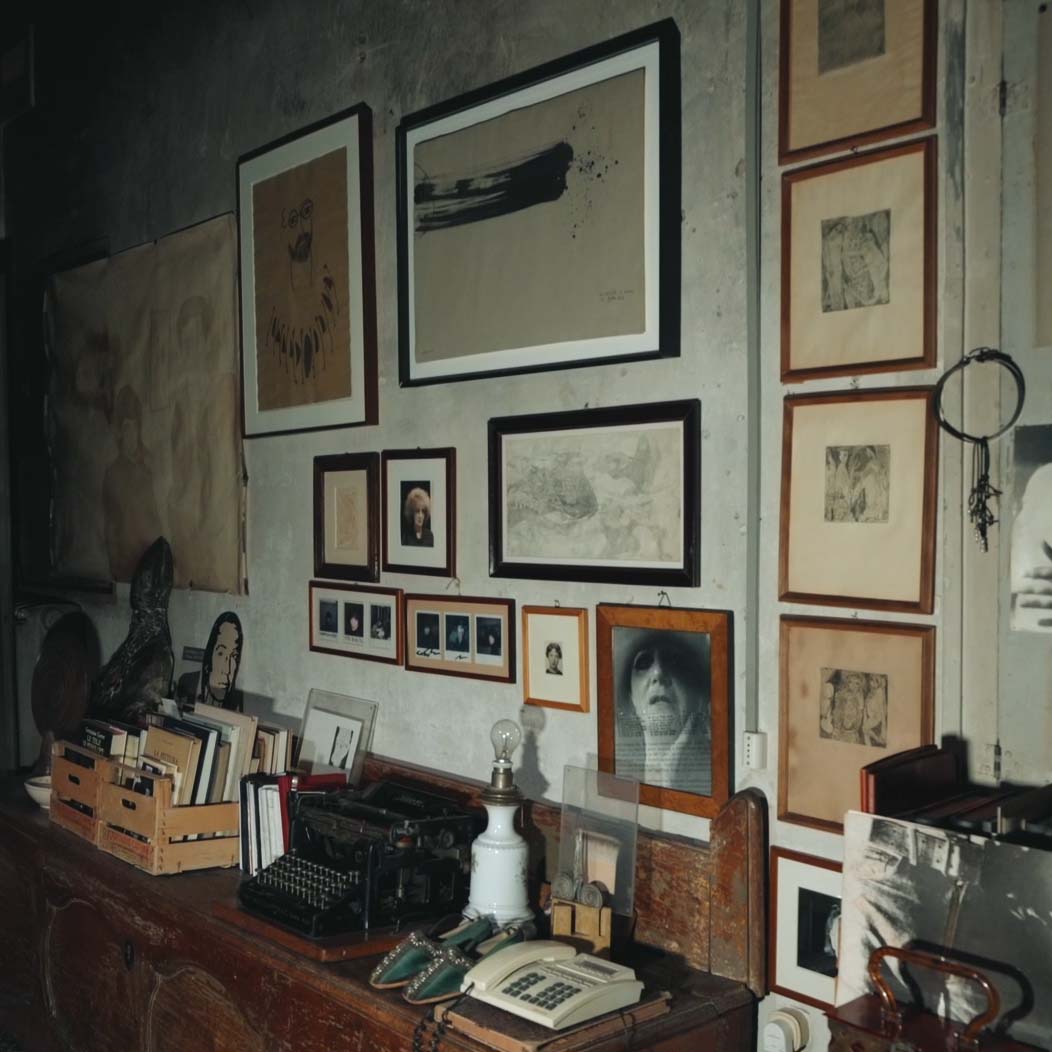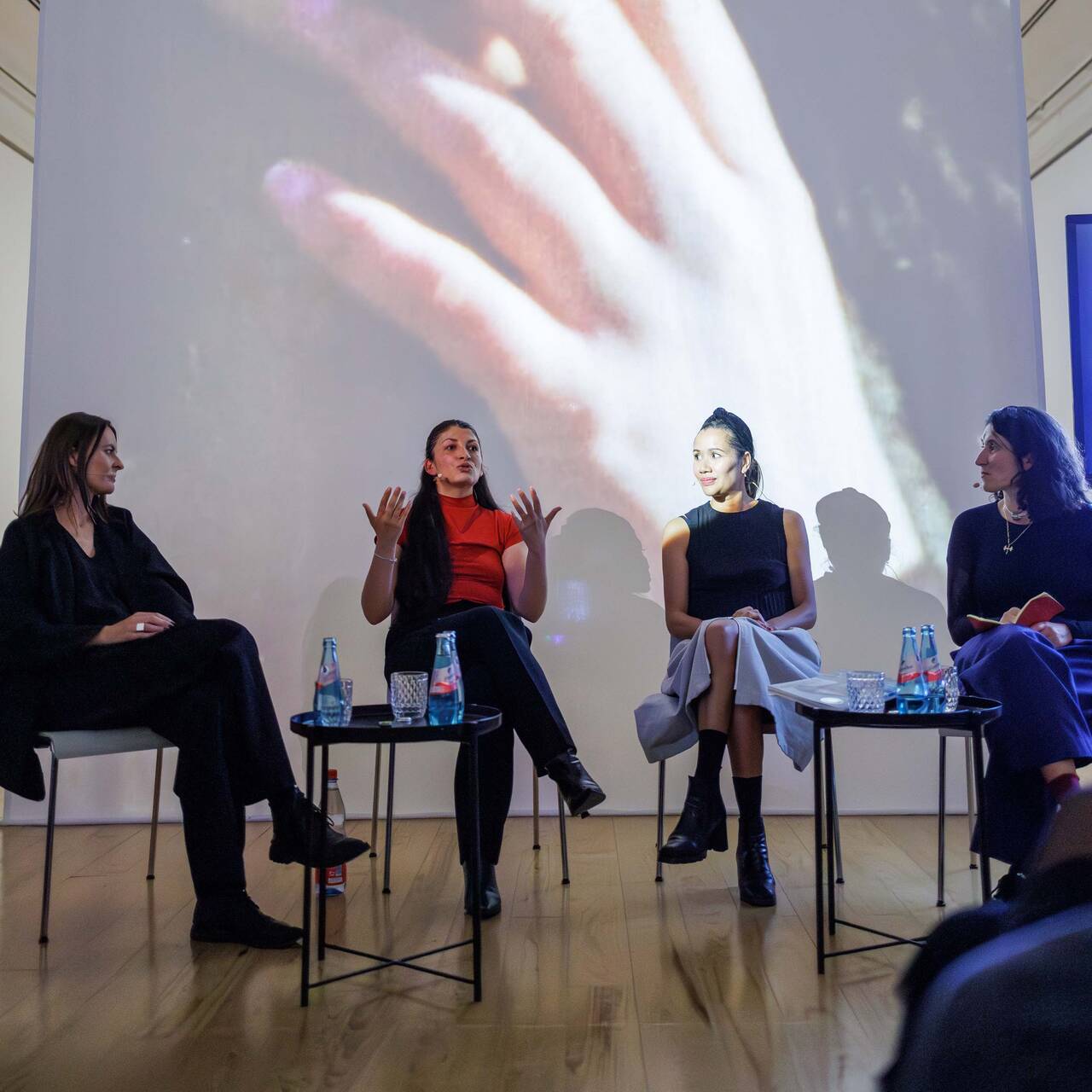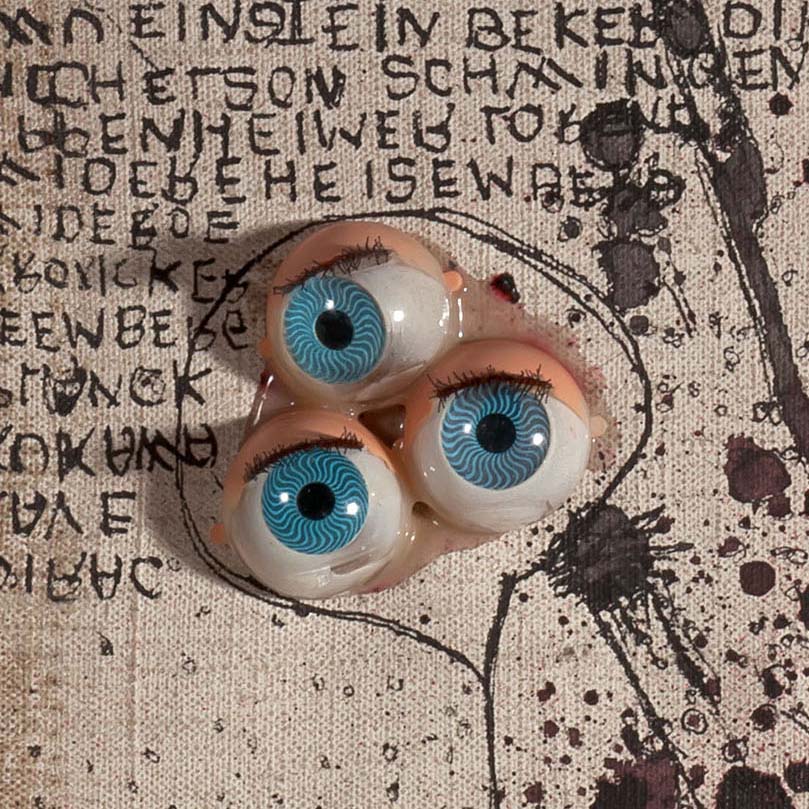Frankfurt-based peace researchers Nicole Deitelhoff and Christopher Daase discuss war, peace and the many shades in between.
On the floor of Nicole Deitelhoff’s office at the Peace Research Institute Frankfurt, which is part of the Leibniz Association, there is a baby blanket and a toy. They belong to Nicole Deitelhoff and Christopher Daase’s youngest daughter, who was born just five months ago. Daase and Deitelhoff have three children and manage the renowned foundation (Deitelhoff is the Managing Director, and her husband her deputy), and both also work as professors of politics at Frankfurt’s Goethe University as part of the Cluster of Excellence for “Normative Orders”. We spoke to the peace researchers about Trump and Brexit, nationalism and Europe, war and peace and the peacemaking power of art.
Pegida and AfD, Trump, Brexit, the risk of Europe disintegrating, the war in Syria. Are we living in particularly uncertain times, or is that just the way we perceive it?
Daase: You have to ask yourself: What does “certainty” mean? I believe that there is a general uncertainty in comparison to earlier times. Many things that previously seemed certain are being set in motion. You need only think of the EU, about international institutions, which we thought had a certain degree of stability. How could anyone come to the conclusion that it is better to give up on a successful project like the EU and fall back on times of nationalism? That was unthinkable for us. And now, in many countries, it’s only a few voters that separate us from this. Things are similar on the global-political side. There too, there was previously a notion of fundamental stability. Of course there were conflicts and many wars, but there was a clear understanding of what international politics and war and peace are. That’s not the case today. Even the difference between war and peace is no longer so clear. There are conflicts everywhere: ethnic conflicts, terrorism. All phenomena that blow apart our traditional categories to a certain extent. At the same time though, you have to admit that there are also a lot of positive developments. Fewer wars, fewer dead.

Is this vague feeling of uncertainty therefore also the reason for the new right-wing populism and nationalism?
Deitelhoff: It undoubtedly plays a role. The less the risk can be calculated, the more unclear it is who is protecting us and who bears responsibility, the stronger the desire for someone who offers simple answers. You can also see this in the resentment towards the European Union, which many perceive to be complex, complicated and technocratic. Behind this there is naturally the feeling that there is no longer a number you can call when you’re in trouble. It’s this that prompts rejection of the big projects of the twentieth century and this kind of withdrawal. Among many right-wing populist movements, rejection of international institutions generally plays a role. They aim to go back to a cosseting nation state that never really existed. It’s a romantic notion of a community in which you can still go directly to the authorities and speak to those responsible, who will effectively ensure that your anger is assuaged.

Marine Le Pen, Image by NdFrayssinet (Own work) [CC BY-SA 3.0 (http://creativecommons.org/licenses/by-sa/3.0)], via Wikimedia Commons
How do unpredictable statesmen like Trump, Putin and Erdogan change the world, and how dangerous are they?
Daase: They already have a great deal of potential to cause chaos. The hope is always that the system will entrap these people again. We've seen this with Trump on a few occasions. For example, he was forced to do without certain advisors. There are certain things Trump simply doesn’t know. In the evening he doesn’t read dossiers and prefers to watch television, which in itself is problematic. But where specialists and experts with in-depth knowledge become involved in government, his politics also become more sensible. That’s the hope, at least. At the same time, Trump is of course often the one who ultimately makes the decision, and he has a spontaneity that can be extremely dangerous. Who knows what will happen if North Korea provokes him further? Will he then simply put his foot down and press the button?

Pyongyang, Parade honoring the working party, Image by Uwe Brodrecht [CC BY-SA 2.0 (http://creativecommons.org/licenses/by-sa/2.0)], via Wikimedia Commons
What exactly do peace researchers study?
Daase: We call ourselves peace researchers, but what exactly are we researching? Well, war, of course. We try to use typical sequences of conflicts to identify mechanisms that will make it possible to overcome these conflicts. Peaceful conflict resolution is the goal.
Deitelhoff: Here, our research is also aimed very specifically at peace. Within the foundation we have an entire program section dedicated solely to institutions' achievements with regard to peace.
Can you give us examples of these institutions?
Deitelhoff: The United Nations, and a whole series of special and subordinate organizations. These also include the European Union, but also the World Trade Organization, the World Health Organization ...
Daase: And NATO too. And we always look at both sides. They fight wars too, so you have to take a critical approach here. To what extent does military intervention bring us closer to peace? Can military deployment achieve positive things too? Is it right and appropriate to use the military to protect human rights?

President Donald J. Trump, Image By DOD photo by U.S. Air Force Staff Sgt. Jette Carr) [Public domain], via Wikimedia Commons
What is peace actually, and how can it be created?
Daase: There are many ways of defining peace. There are entire libraries on the topic. It’s hard to imagine the end point of peace. Paradisiacal images and utopias come to mind here, but probably for our work it’s more important to set a course in the direction of peace. That means, therefore, that peace is refraining from violent means to an ever greater extent and striving for the far-off ideal.
So a gradual disarmament?
Deitelhoff: Exactly. But it’s not only about ridding conflicting parties of their physical weapons. They also need to be disarmed on a communication level. The discourse, which is either polarized or collapses completely, needs to be changed. One very important point here, which we know from peace negotiations, is recognition. One reason why there is often so little progress in conflicts is the fact that the conflicting parties do not recognize each other as legitimate discussion partners. In face-to-face discussions it is easier to convey respect and to make it more credible. But if we’re talking about conflicts between societies or within societies, then a great deal of trust has already been lost. Frequently external actors are still involved on both sides and then it becomes a great deal harder to reestablish trust.
NATO maneuver of American tanks in a German city, Image author Unknown [Public domain], via Wikimedia Commons
How do you achieve that?
Deitelhoff: There are various mechanisms, which are also a subject of our research. For example, there is the classic form of mediation, i.e. the attempt to bring impartial third parties into play, UN special envoys, for example. Or you can try to draw the parties out of their direct conflict: hold peace negotiations not in the conflict region but elsewhere entirely. You try to create a very specific atmosphere. There have been negotiations, for example, where the chief negotiator has brought along small children. During the breaks in negotiations, the conflicting parties were in a room with the children, playing with them and thus finding themselves on a very different level of togetherness. When people are taken out of the conflict situation, then it’s easier for them to value one another. This can subsequently be transported back into the negotiations.
You have three small children. Will they ever see world peace?
Deitelhoff: I would venture a definite no. Ultimately, world peace is a regulative notion that should guide our thinking and action.

UN soldiers monitor the border between Eritrea and Ethiopia, Image by Dawit Rezene [CC BY-SA 1.0 (http://creativecommons.org/licenses/by-sa/1.0)], via Wikimedia Commons
The SCHIRN exhibition Peace proposes that the peace of interaction and communication is determined by all the players existing in the ecosystem. What do you think of this theory?
Daase: First I think it’s important to recognize that peace isn’t something for which politicians alone are responsible; rather, it's up to all of us as individuals. We all bear responsibility for how our society deals with problems, with the environment, with migrants and with everything that affects us. That’s where peace begins.
Deitelhoff: I get the impression that a multidimensional image of peace permeates this theory. Here, the environment is also taken into account in the sense of biodiversity and climate as part of peace. We cannot create lasting peace through the establishment of political institutions and discussions. We also need to consider the consequences of our actions on the environment in a very basal sense: for plants and for animals. If we don’t succeed in limiting global warming, we simply lose the basis of our very existence. Even now, we’re seeing this with water, which is ever more frequently becoming a primary cause of conflict because certain societies no longer have sufficient access to it. So yes, this theory holds up.

Can art contribute to peace?
Deitelhoff: Art can provoke. It can help us to question certainties and to present them in a new light. This leads us to start discussing and questioning things anew, and that can make a contribution towards peace.
Daase: Art has also already been used in the past to mobilize war and inflame conflicts. However, art can also contribute to promoting peace. Art creates a space in which we can reflect on specific questions: How do we want to live? What is valuable?
Deitelhoff: It’s not without reason that totalitarian systems intervene strongly in artistic production: They want power over the definition of images and thus inevitably limit discourse too. Art can transcend discourse.


The film to the exhibition: Hans Haacke. Retrospective
A legend of institutional critique, an advocate of democracy, and an artist’s artist: The film accompanying the major retrospective at the SCHIRN...

A new look at the artist – “L’altra metà dell’avanguardia 1910–1940”
With “L’altra metà dell’avanguardia 1910–1940”, in 1980 Lea Vergine curated an exhibition at the Palazzo Reale in Milan that was one of the first...

Non-human living sculptures by Hans Haacke and Pierre Huyghe
In his early work, HANS HAACKE already integrated animals and plants as co-actors into his art. In that way he not only laid the foundations for a...

CURATOR TALK. CAROL RAMA
SCHIRN curator Martina Weinhart talks to Christina Mundici, director of the Carol Rama Archive in Turin, editor of the first Catalogue Raisonné and...

Freedom costs peanuts
HANS HAACKE responded immediately in 1990 to the fall of the Berlin Wall and turned a watchtower into art.

The film to the exhibition: CAROL RAMA. A REBEL OF MODERNITY
Radical, inventive, modern: The film accompanying the major retrospective at the SCHIRN provides insights into CAROL RAMA's work.

Now at the SCHIRN: Hans Haacke. Retrospective
A legend of institutional critique, an advocate of democracy, and an artist’s artist: the SCHIRN presents the groundbreaking work of the compelling...

Carol Rama’s Studio: A nucleus of creativity
CAROL RAMA determinedly forged her own path through the art world. Her spectacularly staged studio in Turin was opened to the public only a few years...

PANEL: POLITICAL ACTIVISM BY SELMA SELMAN
Hosted by Arnisa Zeqo, Amila Ramović and Zippora Elders speak with the artist Selma Selman about her artistic career, the exhibition SELMA SELMAN....

Now at the SCHIRN: Carol Rama. A rebel of Modernity
Radical, inventive, modern: the SCHIRN is presenting a major survey exhibition of CAROL RAMA’s work for the first time in Germany.